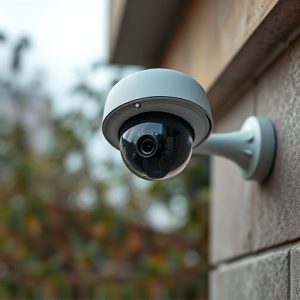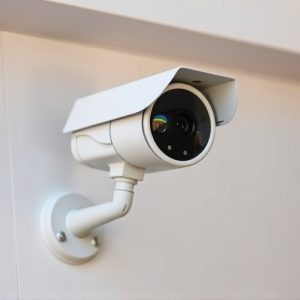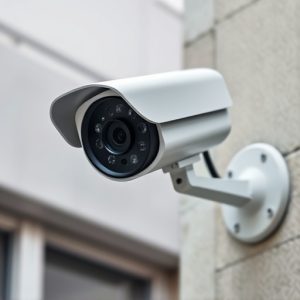Optimizing Dummy Security Camera Placement: Height Guidelines and Illuminated Design
Optimizing security through dummy camera placement requires adherence to the Dummy Security Camera H…….
Optimizing security through dummy camera placement requires adherence to the Dummy Security Camera Height Guidelines, which dictate ideal heights for comprehensive surveillance based on outdoor/indoor settings, field of vision, and privacy. Integrated camera-light systems offer enhanced visibility day and night, minimizing blind spots and deterring intruders. Strategic positioning at eye level or slightly elevated avoids distortions and shadows while ensuring full coverage, aligning with regulations and enhancing safety without compromising privacy.
“Elevate your security with the strategic placement of dummy security camera shells—a powerful deterrent in any setting. This article explores the art of optimizing dummy cameras’ visual impact through illumination and positioning. From understanding critical factors influencing height to best practices for visibility, we delve into the benefits of enhanced lighting and compliance with dummy camera height guidelines. Learn how these elements intertwine to create an effective security network.”
- Understanding Dummy Security Camera Placement: Factors Influencing Height
- Benefits of Illumination: Why Lights Matter in a Security Shell
- Designing for Optimal Visibility: Best Practices for Camera and Light Positioning
- Compliance and Safety: Considerations for Dummy Camera Height Guidelines
Understanding Dummy Security Camera Placement: Factors Influencing Height
When planning the placement of dummy security cameras, understanding the ideal height is crucial for effective surveillance and deterrence. The Dummy Security Camera Height Guidelines suggest positioning them at a level that provides a clear view while remaining relatively unobtrusive. Factors like the camera’s field of vision, lighting conditions, and the area’s layout influence this decision. For instance, in well-lit outdoor areas, cameras can be placed higher to capture a broader scene, whereas indoor spaces might require lower placements to monitor specific zones without disturbing activities.
Key considerations include ensuring the camera’s line of sight is unobstructed and that it captures critical areas without invading privacy. Manufacturers often provide recommendations based on camera types and intended use cases, which serve as valuable references for optimal Dummy Security Camera Height Guidelines.
Benefits of Illumination: Why Lights Matter in a Security Shell
Security cameras, when equipped with lights, offer a multitude of advantages that enhance their effectiveness as surveillance tools. Illumination plays a pivotal role in ensuring optimal visibility during both day and night operations, making it an essential component of any security system. By integrating lights into a security camera shell, several key benefits are achieved: improved image quality, better detection capabilities, and increased deterrence against potential intruders.
The strategic placement of lights can supplement the camera’s field of view, filling in dark areas and revealing hidden corners. This is particularly crucial when considering the recommended Dummy Security Camera Height Guidelines, ensuring that blind spots are minimized. Well-lit environments also facilitate clearer identification of individuals or objects, enhancing the overall security posture. Moreover, the presence of lights acts as a powerful psychological deterrent, signaling to potential trespassers that the area is under surveillance, thus discouraging unwanted activities.
Designing for Optimal Visibility: Best Practices for Camera and Light Positioning
Designing for optimal visibility is a key aspect of setting up a security camera system. The placement of cameras and lights plays a significant role in ensuring clear and detailed footage, especially in low-light conditions. When it comes to dummy security camera height guidelines, the general rule of thumb is to position them at eye level or slightly elevated. This standard practice guarantees a comprehensive view without any significant blind spots. By aligning the camera’s field of view with human perception, you capture a more natural and effective surveillance area.
Best practices suggest avoiding mounting cameras too low, as this can lead to distorted perspectives and potential privacy concerns. Conversely, positioning them too high might result in obstructed views or excessive shadows during different lighting conditions. Therefore, careful consideration of the environment and intended coverage is essential. Additionally, using lights specifically designed for security cameras can enhance visibility by reducing shadows and illuminating crucial areas, further improving the overall effectiveness of the surveillance system.
Compliance and Safety: Considerations for Dummy Camera Height Guidelines
Security camera placement is subject to various guidelines, especially when considering public safety and privacy regulations. One critical aspect often overlooked is the dummy security camera height—a factor that significantly influences both compliance and overall security effectiveness. The recommended height for installing dummy cameras varies based on location and purpose. Typically, these devices should be positioned at a level that allows clear visibility without obstructing foot traffic or causing discomfort to individuals in the area.
For outdoor settings, mounting dummy cameras at eye-level (approximately 5–6 feet or 1.5–1.8 meters) is often advised. This height ensures that bystanders can easily observe the camera’s presence, potentially deterring criminal activities. In contrast, indoor dummy cameras might be installed slightly lower to avoid giving offenders a chance to block or manipulate them. Adhering to these Dummy Security Camera Height Guidelines is essential to maintain compliance with privacy laws and ensure optimal security coverage.
In conclusion, understanding the optimal placement of dummy security cameras, particularly focusing on height guidelines, is crucial for enhancing security measures while adhering to best practices. Illumination plays a pivotal role in improving visibility and deterring potential threats. By following the designed positioning strategies and complying with relevant safety standards, such as those related to dummy camera height, one can create an effective surveillance system that offers enhanced protection without compromising aesthetics.


